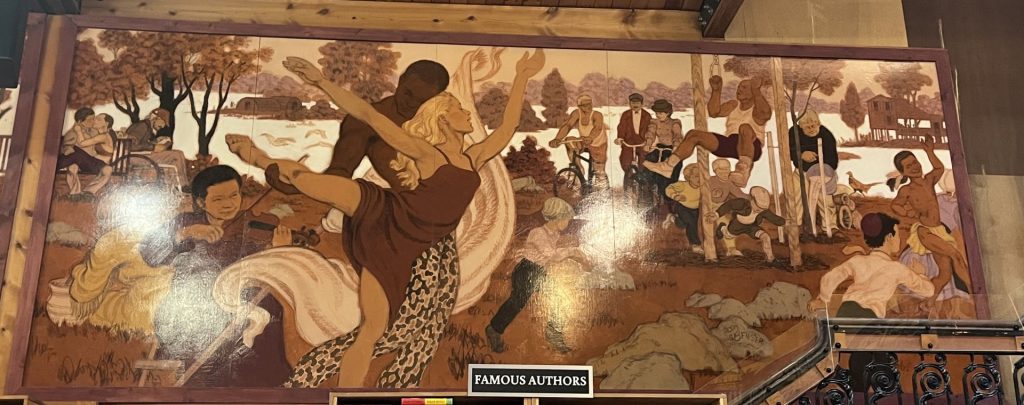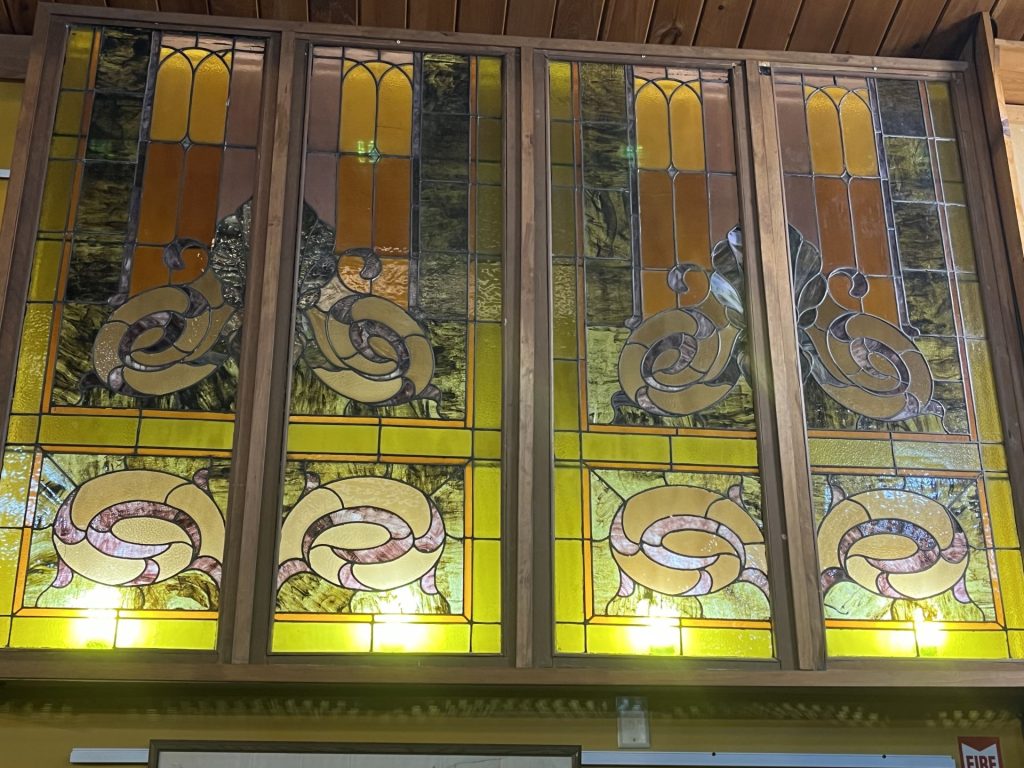Midtown Scholar: More Than a Bookstore, More Than an Experience
Midtown Scholar is more than a bookstore, it’s an experience. But that’s almost still too derivative, to just call it one experience. Midtown Scholar is a different experience on every floor, from the main floor brimming with bestsellers, to their balcony full of used and new fiction, to their underground scholarly levels stacked with rare books. Every floor in the building is perfectly placed, some appealing to the masses while others appease those who reject the mainstream. As said in On the Front Counter and the Store Window, “out on the floor, it’s all possibility, what a customer might choose to purchase, but at the counter, once the register starts ringing, that’s where the revelations are” (Buzbe 106). Between their expanded collection of new, used, rare, and scholarly books, you can go to Midtown Scholar and get any blend of experiences and take home any number of different novels, perfectly tailoring the bookstore to your needs as a consumer.
For instance, I could never leave the ground floor and have a full indie bookstore experience. To my immediate left as I enter lies the Midtown Scholar cafe, where one can step up and order a coffee to drink while you browse. I personally recommend their iced chai latte, as I’ve found that the drink pairs nicely with browsing paperback books and chatting about popular authors.
The lighting on this floor is warm, spotlights reminiscent of the building’s roots as a theater beaming down on me from the high ceiling and illuminating neutral-toned murals, light wood, and black metal banisters. The look is cohesive, but incomplete without reference to the tall, unmoving bookshelves that reach almost to the ceiling of the floor, and the more movable ones in the center of the room, filled with BookTok hot picks and new paperbacks. For the average consumer, those looking for a bestseller or greatest hit, this first floor fulfills every need they could possibly have. For me, I am merely delighted to discover one of many facets of this bookstore.
As Pyne states in her novel, “Bookshelves act as the mediating object between a person and a book; how the book is met depends on the mobility of the shelf,” (Pyne, 52). The “shelves” on this floor are easily movable for new configurations, events, or other needs, perfect for the high turnover world of popular sellers and for community experiences. This is where the majority of the new books in store are kept, face up on every table, easily spotted from a distance. If merch is more your style, you can pick up some Out-of-print shirts and paraphernalia next to the stage. The ease with which I can pick up and flip through novels and merchandise here is most comparable to a chain bookstore, with ease of access to as many books as possible taking priority. It’s familiar and effortless, but I much prefer other areas of the store.

Rather than focusing on the ground floor first, I like to make a beeline for the balcony, breezing past the cafe area and making a right up the stairs to settle upstairs among the YA, new adult, fantasy, and sci-fi novels. The color pallet of the store remains the same, but the balcony area carries a quieter sort of feel. Looking down over the ground floor of Midtown Scholar, this section is where I feel most at home.
Reminiscent of the years of my youth spent wrapped in books at local libraries, his section feels comfortably all-encompassing. The shelves of alphabetized fiction rise high over my head, to the point that I feel small, but not uncomfortably so. It’s quieter up here, the buzz of those below feels far away and I can relax as I peruse cheesy romance novels and over-the-top fantasy epics. This is where more used books are stored as well, perfect for a college student on a budget. These books are mostly faced in, appealing to those like me who enjoy the hunt of browsing, though the rare eye-catcher is propped on a thin wire stand.
While the lighting on the first floor is traditional to that of an indie bookstore, the upper balcony includes some natural lighting while still benefitting from the store’s overhead lighting, giving the balcony and ground level a sense of similarity. I feel like I can stay here longer and browse at my own pace. Not like the fast, open nature of the ground floor. As Manusos states, “The difference [between indies and chain stores] is the location in which the book is found” (Manusos). Whereas the ground floor felt similar to Barnes and Noble with tables of themed books at every turn, this upper level only includes bookshelves and glass cases. The ability that Midtown Scholar has to switch between a more mainstream feel and a more independent feel while remaining cohesive is impressive, and it all comes down to these tiny details: the wooden texture of the bookshelves, the warm lighting, and the metal banisters.
For those who prefer scholarly or rare books, you may step beyond the ground floor and instead head to the lower levels. The air is cooler here, the air smells like old books and concrete. The lighting is colder, and the clientele keeps to themselves. Same as the balcony, it’s quieter down here, and carries an air of curation rather than consumerism. These books speak to the “scholar” part of Midtown Scholar’s name, and as Pyne points out, ‘authority, advantage, and social status […] is most easily symbolized by the presence of bookshelves, particularly in a social space’ (Pyne 75). Gone are the flashy covers of the books on the ground floor, and these books sit mostly face out on the same wooden shelves, spaced further apart. Nothing else sits on these shelves. Each book, each shelf, is given the room to breathe, and a certain sense of respect that you don’t find on the ground floor, with stacks of mass-produced, perfect-bound novels. Yet the other people in this section keep the same joy in their eyes that I see in the eyes of the 14-year-old girl who picked up a bestseller upstairs. The worn wood of the shelves and the signage above are familiar, and I feel compelled to learn enough about this place to understand it, rather than feeling like I’m not supposed to be here.
Yet at the end of the day, everyone must return to the register, arms heavy with books. Some of them you were probably looking for, some of them you never realized that you needed. Midtown Scholar has that effect on people. In an interview with James Daunt, the Chief Executive Officer of Barnes & Noble, he stated that “the modern bookstore is about an intellectual browsing environment throughout the store. […] Our job, when you come into our stores, it’s just fun, it’s exciting, you walk out with books you had no idea that you needed, wanted, and feel really good about it” (Manusos). I find that this holds true. When I last stepped to the register, I found my arms full of books that were rich and varied in genre, length, and form. However, much like the entirety of Midtown Scholar, these novels are linked together by commonalities. The used book I found on Celtic mythology includes mention of a species strikingly similar to the vampiric love interest in the romance novel I grabbed off the bestseller table. Another book I picked up because I recognized the author’s name includes ties to the folklore that inspired a fairytale retelling I found tucked away in a corner.

Despite the differences between floors, Midtown Scholar still manages to present an experience that feels natural. If you’re like me, and enjoy spending time flitting between floors, feeling the difference in atmosphere, consumer, and content, you’ll notice ties between the woods and metals, the art on the walls, and the font on the signage that directs you. Midtown Scholar executes varied experiences while still tying them together. You can step inside and travel through a cafe, an independent bookstore, a library, and a scholar’s space all within the square footage of one building. In a way, walking through this building is just like reading a book.
Citations
Buzbee, L. (2008). The yellow-lighted bookshop: A memoir, A history. Graywolf Press.
Manusos, L. (2022, February 22). The science and recent history of bookstore design. BOOK RIOT. https://bookriot.com/the-science-and-recent-history-of-bookstore-design/
Midtown Scholar. (2012). Traced Map of Midtown Scholar Layout, minor artistic edits made. Facebook. Midtown Scholar. Retrieved October 27, 2023, from https://www.facebook.com/MidtownScholar/photos/a.10150580590017724/10150580597522724/?type=3.
Pyne, L. (2019). Bookshelf. Bloomsbury Academic.

0 Comments